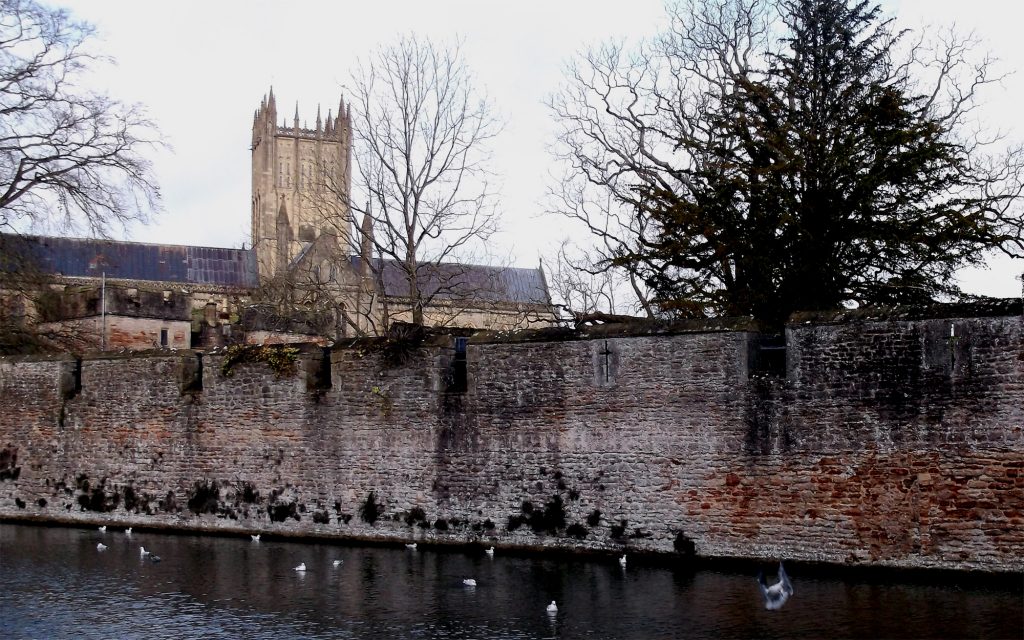Mystery Worshipper: Urganda
Church:
Wells Cathedral
Location: England
Date of visit: Friday, 24 January 2020, 5:15pm
The building
The Cathedral Church of St Andrew the Apostle was built in the 12th and 13th centuries beside a sacred well. There are so many beauties it is hard to compress them into a few sentences. You need to see: the west front with its gallery of sculpture; the exquisite chapter house and its staircase; the nave with its scissor arches, which look 1930s but in fact are 1330s; the witty and detailed medieval sculpture; the retrochoir and Lady chapel; the tomb of Thomas Bekynton, bishop of Bath and Wells from 1443-1465; the north porch; the clock; and so much more. The cathedral was built to bring heaven down to earth and, as long as it works, any one detail will do.
The church
The talks and lectures, exhibits and musical events, as well as special services, sponsored by the cathedral are all listed on their website. Morning liturgy and choral evensong take place each weekday. Choral matins, choral evensong, holy communion and eucharist are celebrated on Sundays. According to their website, ‘Occasionally the cathedral, or parts of it, may also need to close or only offer restricted access for a service, special event, filming or general maintenance.’
The neighborhood
Wells is a small city, and relatively unspoilt – a sacred place and also a lively town. It has an active market, a flourishing film trade (inevitably), a moated bishop's palace (now a tourist resort), a ‘Penniless Porch,’ built by Bishop Beckynton, who liked to see beggars sheltered from the rain. He also channelled the water through the city so that everyone could share the sacred spring, which by his time was in the bishop's garden. Bishop Beckynton built all the time: three of his gatehouses still stand, decorated with his rebus. Also his well house, the bridge linking the cathedral with Vicar's Close, and a whole row of houses. Vicar's Close is an unspoilt medieval street, still used for its original purpose: to house the priests serving the cathedral as the Vicars Choral, whose duty was to chant the divine service eight times a day. They and the choir still keep the cathedral's tradition going. The walk from the Close along the outside of the bishop's moat and up the Tor, a landmark that can be seen from a great distance, is spectacular. Inside the moat, the ramparts where Bishop Thomas Ken composed his hymns are intact and you can walk on them, with views of the Glastonbury Tor. George Henry Law, Bishop of Wells from 1824-1845, landscaped the gardens of the palace, making the well into a lake, so you can see the cathedral reflected. There have to be swans on the moat. It is a tradition that is very much still alive.
The cast
The monks of Downside Abbey and the schola cantorum of Downside School.
What was the name of the service?
Choral Vespers.How full was the building?
The quire was pretty full: roughly choir 30, clergy 3, monks 8, congregation 60+, plus the musical director and a verger.
Did anyone welcome you personally?
I was handed a service sheet.
Was your pew comfortable?
Very comfortable stall.
How would you describe the pre-service atmosphere?
Silent and expectant.
What were the exact opening words of the service?
‘Deus in adjutorium meum intende’ (O God, come to my aid), after an introduction in English explaining that this service, which has happened for some years, is part of the week of prayer for Christian unity.
What books did the congregation use during the service?
Printed service sheet. In the stalls were the New English Hymnal and the Book of Common Prayer.
What musical instruments were played?
Small organ in the quire.
Did anything distract you?
That quire is so full of distractions it is hard to list them all – but they merge into the general theme of heaven on earth.
Was the worship stiff-upper-lip, happy clappy, or what?
Chanted in Latin throughout.
Exactly how long was the sermon?
No sermon.
Which part of the service was like being in heaven?
The responsory Hic est fratrum amator (This is a man who loves his brothers), because it was unaccompanied. There was also a startling Magnificat, half chant, half David Bevan (whose Magnificat, in the repertoire of many a cathedral choir, is for eight voices!), which was full of interest.
And which part was like being in... er... the other place?
The use of the organ to underline the psalms. The choir were well capable of doing without it. It sounded like an intrusive nanny.
What happened when you hung around after the service looking lost?
Nothing.
How would you describe the after-service coffee?
None.
How would you feel about making another visit (where 10 = ecstatic, 0 = terminal)?
10 — Delighted Downside are singing so well. They haven't in former years. The cathedral has excellent music and I'd always come to hear them.
Did the service make you feel glad to be a Christian?
Extremely glad that a beautiful tradition, and not one I know, is maintained.
What one thing will you remember about all this in seven days' time ?
Deus in adjutorium meum intende.
